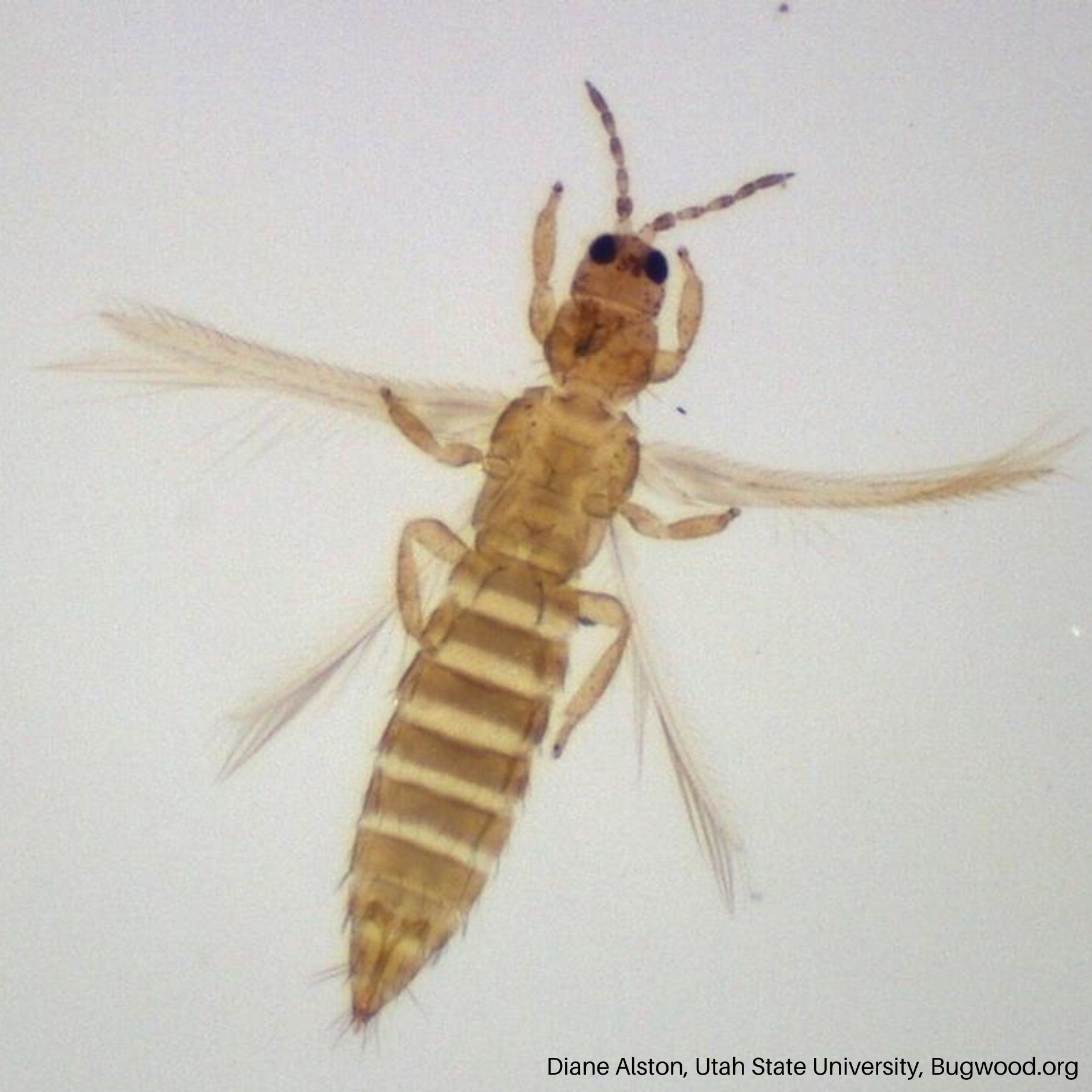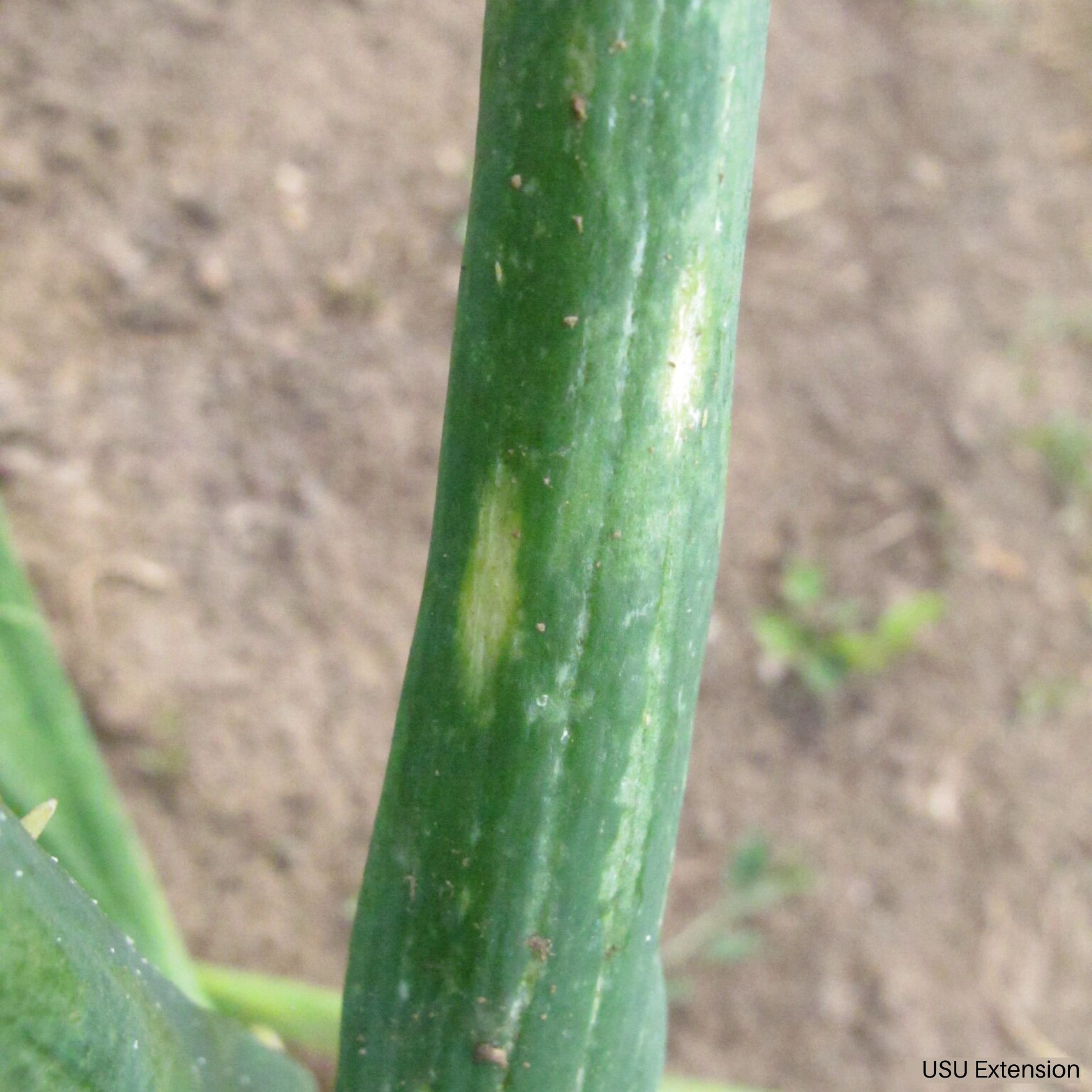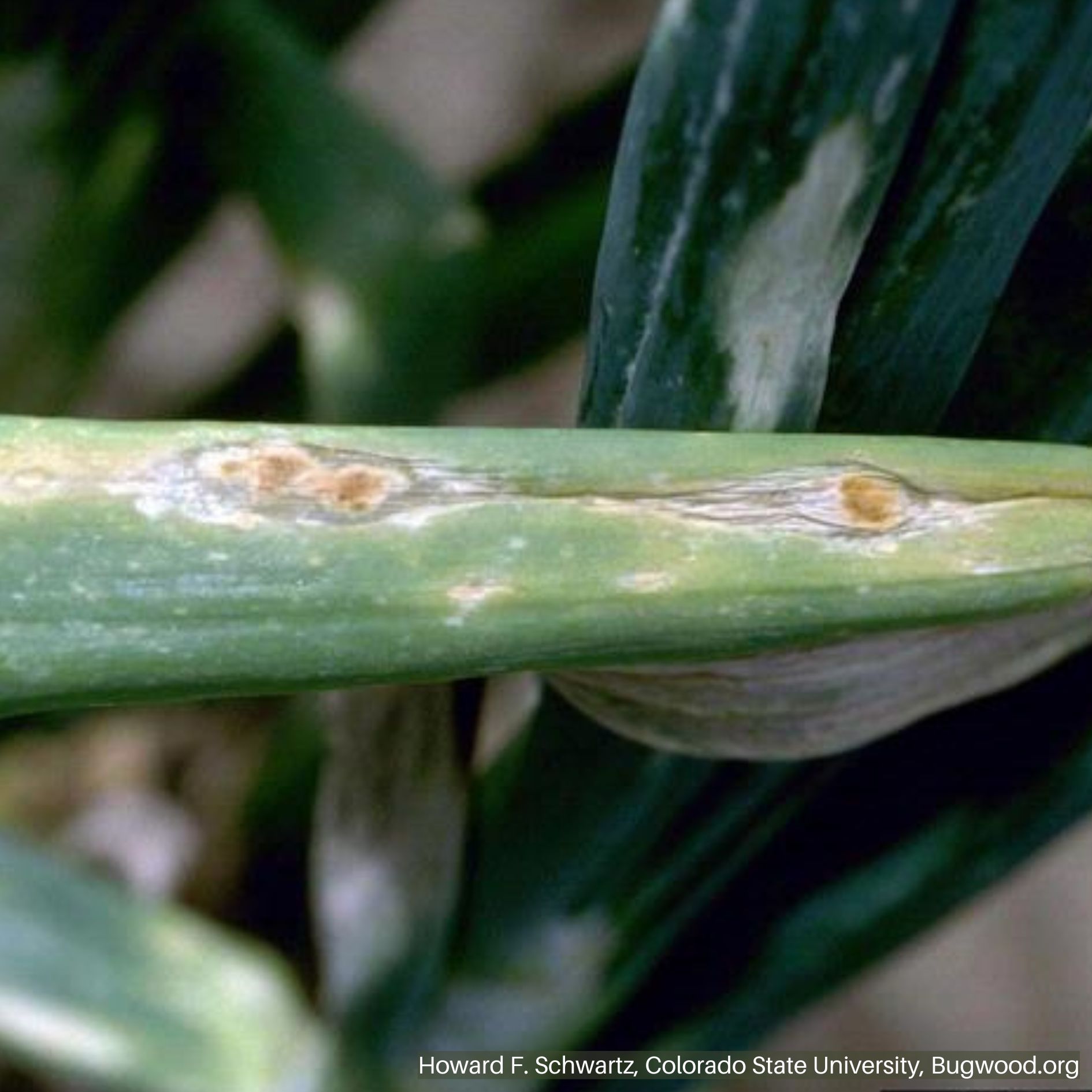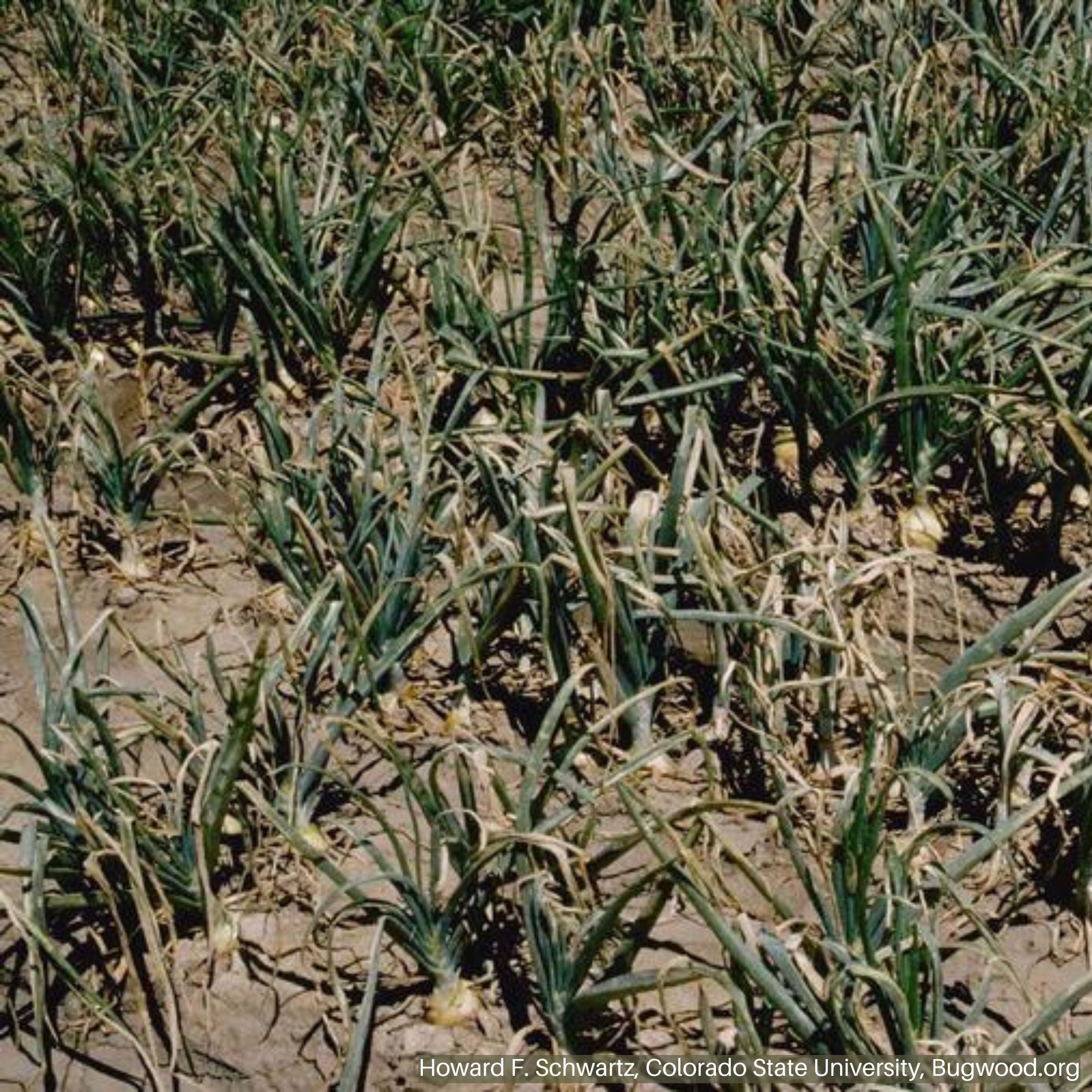Iris Yellow Spot Virus
HOSTS
- Chives
- Garlic
- Onion
BIOLOGY
Iris yellow spot virus (IYSV) is a Tospovirus spread by onion thrips (Thrips tabaci). It is a concern from June through September.
- Infection occurs when virus-carrying thrips feed on healthy plants.
- Disease likely overwinters from one season to the next in volunteer onions and overwintering thrips.
SYMPTOMS
A range of lesions can occur including concentric oblong light oval-shaped rings (early sign), light green diamond-shaped areas, concentric green and tan oval-shaped rings, tan necrotic spots, and green islands within tan necrotic spots. Damage can reduce harvest yield and grade of onions.
GENERAL MANAGEMENT
This virus is common in Utah and can devastate an onion field (especially for commercial production) by reducing bulb size, yield, and grade of onions at harvest.
- Monitor thrips populations with sticky traps starting in June.
- Damage is often first noticed at field edges, in areas of stressed plants, or in locations with thin plant stands.
- Infected plants may not show symptoms for several weeks.
- Sometimes symptoms may never appear.
- Reduced bulb size and quality of symptoms develop while bulbs are still growing.
- Control thrips.
- Control weeds and volunteer onion plants.
- Remove and destroy infected plants.
- Rotate crops.
There is no cure for infected plants, so prevention is key.
Precautionary Statement: Utah State University and its employees are not responsible for the use, misuse, or damage caused by application or misapplication of products or information mentioned in this document. All pesticides are labeled with ingredients, instructions, and risks, and not all are registered for edible crops. “Restricted use” pesticides may only be applied by a licensed applicator. The pesticide applicator is legally responsible for proper use. USU makes no endorsement of the products listed in this publication.





